The Key to Improving Safety & Efficiency: A Comprehensive Look at the Mold Flipper
In my years in the packaging and material handling industry, from my early days on the factory floor to running my own company, SHJLPACK, I’ve seen one constant: the struggle to balance productivity with safety. In a high-stakes environment like a steel mill, handling heavy, bulky items like molds is a daily requirement. But the traditional methods, often involving overhead cranes and manual rigging, are slow, inefficient, and frankly, dangerous. I’ve seen firsthand the tension in the air when a multi-ton mold is suspended, swaying slightly. You know that one slip, one moment of miscommunication, can lead to catastrophic failure, damaging equipment and, far worse, endangering your team. This constant risk creates a bottleneck, slows down your maintenance cycle, and eats away at your operational efficiency and peace of mind. But what if you could eliminate this high-risk procedure entirely? Imagine being able to turn that same mold over in just a few minutes, with the simple push of a button, and without a single person needing to be in the danger zone. This is not a futuristic concept; it is the reality provided by a dedicated mold flipper. It’s a solution that directly transforms a hazardous, time-consuming task into a safe, predictable, and highly efficient part of your workflow.
A mold flipper, also known as a mold upender or tilter, is the key to improving safety and efficiency in operations that handle heavy molds. It is a piece of mechanical equipment designed to safely rotate or turn over heavy objects like molds, dies, and coils by 90 or 180 degrees. This mechanization eliminates dangerous manual handling and crane maneuvers, significantly reducing accident risks while speeding up the entire maintenance and production cycle.
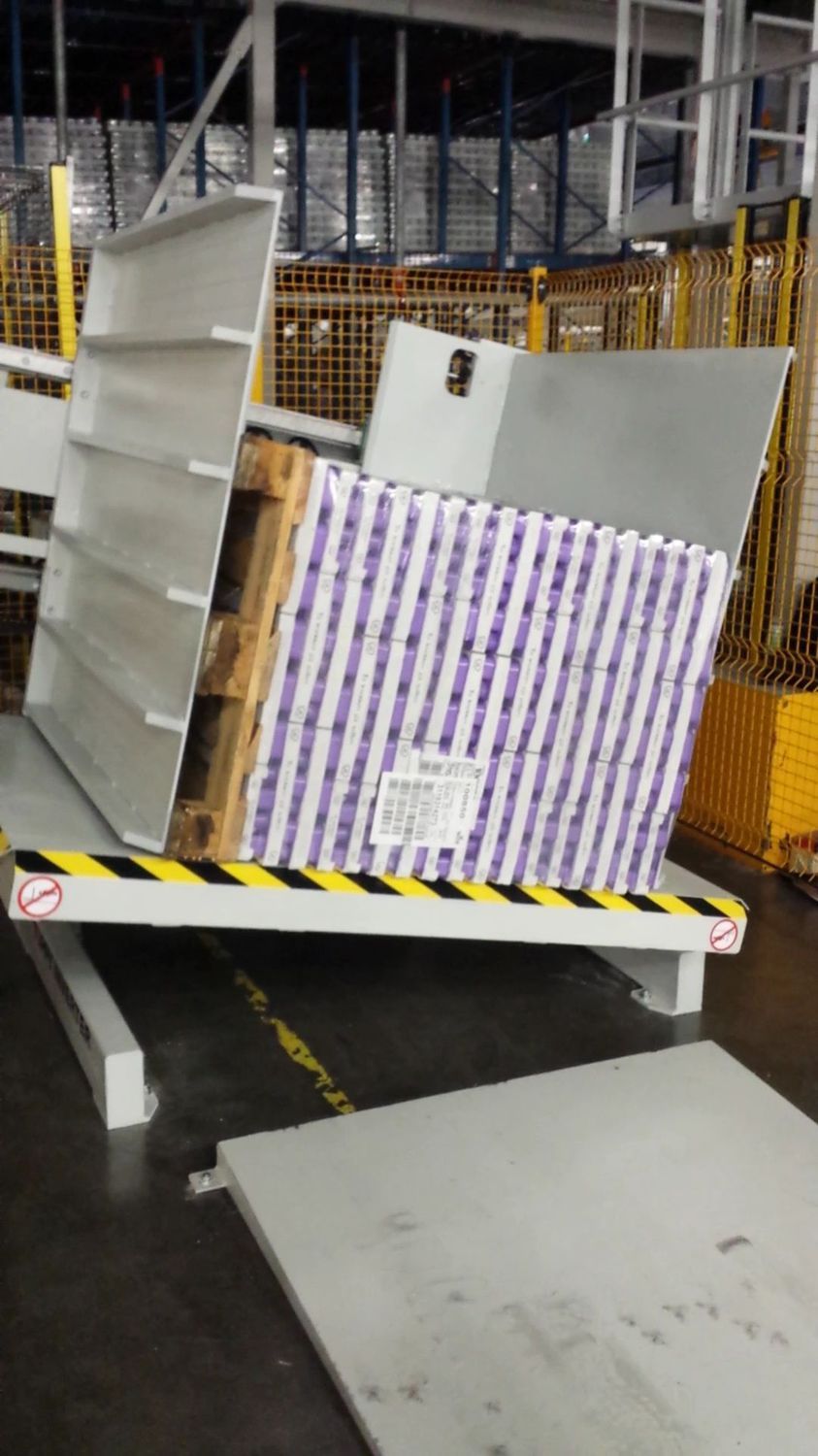
That definition is a good start, but as an engineer and a business owner, I know you need more than that. A machine is just a collection of steel and motors. A solution, on the other hand, integrates into your operation and solves fundamental problems. For a forward-thinking leader like you, Javier, who has to consider everything from energy costs to digitalization, an investment must deliver value on multiple fronts. It has to make your plant safer, your processes more efficient, and your bottom line healthier. So, let’s move beyond the simple definition. Let's break down exactly how a mold flipper can be a strategic asset in your steel mill, addressing the very challenges you face every day and helping you achieve your ambitious goals.
How Can a Mold Flipper Directly Address Safety Concerns in a Steel Mill?
Your people are your most valuable asset. I believe that deeply. Yet, in many plants, we ask them to perform tasks that carry inherent, and often unnecessary, risks. Using an overhead crane with chains and slings to flip a heavy, awkwardly shaped mold is one of the most hazardous jobs on the floor. It’s a high-wire act that relies on perfect coordination, flawless equipment, and a bit of luck. The anxiety is palpable. Every time a load is lifted and turned this way, you're exposing your team to the potential for a catastrophic failure. A slipped chain, an unbalanced load, or a worker stepping into the wrong area at the wrong time can have consequences that no one wants to think about. I remember a close call I witnessed early in my career; the sound of a slipping chain is something you never forget. The cost of even a minor accident—in downtime, investigations, and morale—is immense, and the cost of a major one is unthinkable. A mold flipper is the definitive engineering control that removes this gamble. It works by securing the mold to a solid, stable platform and using controlled, reliable mechanical power to perform the rotation. It designs the danger out of the process, creating a safe, repeatable operation every single time.
A mold flipper directly addresses safety concerns by mechanizing the hazardous process of turning heavy molds. Instead of relying on precarious crane lifts and manual positioning with chains, the machine securely clamps the mold and rotates it within a controlled, stable frame. This eliminates the risk of dropped loads, chain failures, and crush injuries, creating a fundamentally safer work environment.
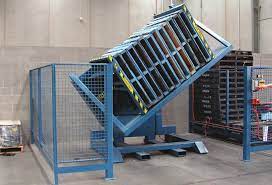
To fully appreciate the safety impact, it's helpful to break down the "before" and "after" scenarios. The traditional method is a complex manual process, while the flipper method is a simple, automated one.
The Old Way: A Chain of Risks
The traditional process for flipping a mold is a sequence of high-risk activities. First, riggers must attach heavy chains or slings to the mold, a task that requires them to work in close proximity to the heavy object. Then, a crane operator has to carefully lift the load. The center of gravity can be unpredictable. The crane then lifts and begins to turn the mold, often requiring manual assistance with guide ropes or even direct pushing to prevent swinging. This entire operation requires at least two or three skilled workers—the crane operator and one or two on the ground—to be in constant, clear communication. The area around the lift becomes a "danger zone" where a failure could be fatal. With your plant's equipment operating for over 15 years, the reliability of older cranes and rigging gear adds another layer of uncertainty to this already risky procedure.
The New Way: Engineered Safety
Now, contrast this with the process using a mold flipper. A single operator, using either a forklift or an overhead crane, simply places the mold onto the flipper's platform. There is no complex rigging involved. Once the mold is in place, hydraulic or mechanical clamps secure it firmly. The operator then steps back to a safe control panel or uses a remote control and presses a button. The machine performs the 90 or 180-degree rotation smoothly and controllably in a matter of one or two minutes. The process is then reversed: the operator unclamps the mold and safely removes it. The risk of a dropped load is eliminated. The need for personnel in the immediate vicinity during the turn is gone. The entire procedure becomes a predictable, one-person job.
Here is a simple comparison:
| Safety Metric | Traditional Crane Flip | Mold Flipper Method |
|---|---|---|
| Personnel Exposed in Danger Zone | 2-3 workers | 0 workers (operator is remote) |
| Risk of Dropped Load | High (relies on chains/slings) | Virtually None (mechanically secured) |
| Process Complexity | High (requires skilled rigging) | Low (simple load/unload) |
| Potential for Human Error | High (miscommunication, rigging errors) | Low (automated, repeatable process) |
| Ergonomic Strain on Workers | High (handling heavy chains, ropes) | Minimal (pushing buttons) |
For a CEO like you, Javier, who is managing aging infrastructure, implementing a mold flipper is a direct and powerful way to mitigate the risks associated with older equipment and manual processes. It's a proactive step to protect your team and stabilize your operations.
What is the Real ROI of a Mold Flipper Beyond Just Efficiency Gains?
As a practical business owner, every piece of equipment you purchase needs to justify its existence on your balance sheet. The first thing we see with a mold flipper is speed—what took 30 minutes with a crane and crew now takes 3 minutes with one operator. That's a clear efficiency gain. But if your analysis stops there, you're missing the most significant financial benefits. Focusing only on time savings is like looking at the tip of an iceberg. Beneath the surface are substantial, often hidden, costs associated with the old way of doing things. You're paying for them every day: in inflated insurance premiums reflecting high-risk activities, in lost production when a mold is damaged during handling, and in the inefficient use of your most valuable assets—your skilled people and your overhead cranes. These costs quietly drain your profitability. The true return on investment (ROI) of a mold flipper comes from systematically eliminating these costs. It's an investment that pays dividends not just in minutes saved, but in dollars saved across your entire operation.
The real return on investment (ROI) for a mold flipper extends far beyond simple time savings. It encompasses significant cost reductions in insurance premiums due to lower accident risk, prevention of costly damage to molds and dies, and the freeing up of overhead cranes and skilled operators for value-added production tasks. This holistic financial impact directly contributes to lowering overall operating costs and increasing profitability.
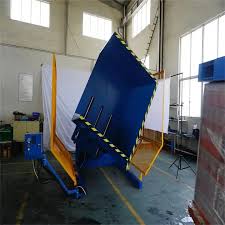
To build a compelling business case, which I know you require for any capital expenditure, we need to look at all the ways a mold flipper impacts your bottom line. It's about quantifying both the direct savings and the avoided costs.
Quantifying the "Soft" Benefits into Hard Savings
Certain benefits seem "soft" until you assign a dollar value to them. Safety is a prime example. Your insurance provider calculates your premiums based on a risk assessment of your operations. The manual flipping of multi-ton molds is a red flag for any underwriter. By implementing an engineered solution like a mold flipper, you are demonstrably reducing one of your plant's most significant hazards. This is a powerful argument to bring to your insurer to negotiate lower premiums, a direct and recurring annual saving.
Then there's the cost of asset damage. Your molds are expensive, precision-made tools. A clumsy flip with a crane can easily result in a mold being dropped, dented, or warped. The cost to repair or replace a large steel mold can run into tens or even hundreds of thousands of dollars. That's before you even consider the cost of the production downtime while that mold is out of commission. A mold flipper handles these assets with a controlled, gentle motion every single time, effectively eliminating the risk of this type of damage. Preventing just one such incident can often pay for the machine outright.
The Opportunity Cost of Your Critical Assets
Your analysis should also include opportunity cost. Think about your overhead crane. In a busy mill, it's a critical piece of equipment, a bottleneck that governs the pace of production. Every minute that crane spends on the low-value task of flipping a mold is a minute it's not being used for its primary purpose: moving raw materials, loading finished products, or servicing the production line. By delegating the flipping task to a dedicated machine, you free up your crane to do the work that actually generates revenue. The same logic applies to your skilled labor. A trained rigger or mechanic is a valuable resource. Their time is better spent on complex maintenance and repairs, not on the repetitive, non-skilled task of preparing a mold for a flip.
Let’s structure the financial argument clearly:
| ROI Component | Description | Financial Impact on a 2M Ton/Year Mill |
|---|---|---|
| Direct Labor Savings | Reduces 2-3 workers for 30 min to 1 worker for 3 min. | Saves thousands of man-hours per year. |
| Increased Crane Availability | Frees up critical overhead crane time for production tasks. | Reduces production bottlenecks, increases throughput. |
| Reduced Insurance Premiums | Lowers operational risk profile. | Potential for 5-10% reduction in liability premiums. |
| Prevention of Asset Damage | Eliminates risk of dropping/damaging expensive molds. | Avoids repair/replacement costs of $50k-$200k+ per incident. |
| Elimination of Downtime | Prevents downtime from accidents or damaged equipment. | Every hour of production saved goes straight to the bottom line. |
| Improved Employee Morale | Workers feel safer and more valued. | Reduces turnover and improves focus and productivity. |
This type of investment is a direct path to your goal of lowering overall operating costs by 8%. It targets waste and risk, turning them into efficiency and profit.
Why is Customization Crucial for Integrating a Mold Flipper into an Existing Production Line?
Your steel mill is a complex, living system that has evolved over many years. You have an established layout, a specific material flow, and equipment that has been working for over a decade. The idea of introducing a new, large piece of machinery can be daunting. You can't just clear a huge space and drop in a standard, off-the-shelf product. That approach is for new constructions, not for established plants like yours. A one-size-fits-all machine will almost certainly fail to meet your specific needs. It might be too large for the available space, unable to handle the unique dimensions of your largest molds, or incompatible with your method of loading, whether by crane or forklift. You could find yourself forced into expensive and disruptive facility modifications just to accommodate a machine that wasn't designed for you in the first place. This is a situation I have helped many clients avoid. This is why, for a brownfield integration, customization isn't just a nice-to-have feature; it is absolutely essential for success. You need a partner who doesn't just sell you a machine, but works with you to design a solution that fits your operation like a key in a lock.
Customization is crucial for integrating a mold flipper because every factory has a unique layout, workflow, and range of mold sizes and weights. A standard machine may not fit the available space, interface correctly with existing cranes or forklifts, or have the capacity for the heaviest molds. A customized solution ensures a perfect fit, maximizing safety and efficiency without requiring costly modifications to the plant.
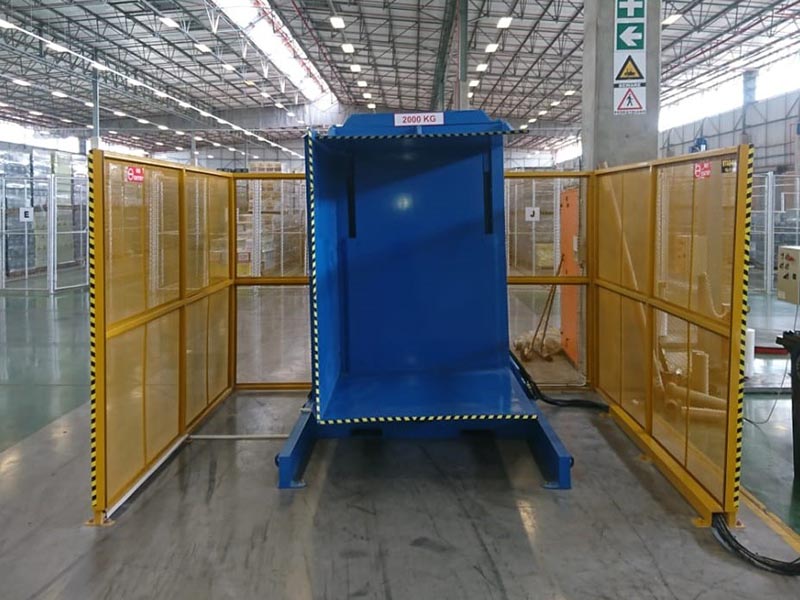
As an engineer, this is the part of the process I enjoy most—solving the puzzle. A truly effective integration requires a deep understanding of your specific operational environment. This is where the difference between a simple supplier and a strategic partner becomes clear.
Key Areas for Customization
A successful project begins with a detailed analysis of your needs. We don't start with a product catalog; we start with questions. What are the weight and dimensions (length, width, height) of the smallest and largest molds you need to handle? How do you currently move these molds—with a specific type of forklift, an overhead crane with C-hooks, or a rail-based transfer cart? Where is the ideal location for this machine to minimize travel time and integrate smoothly into your mold maintenance workflow? The answers to these questions define the core specifications of the machine.
- Capacity & Dimensions: We design the machine's structure and power unit to safely handle your maximum load, and we size the platform or V-saddle to accommodate your full range of mold sizes.
- Loading Method: The machine's deck height and configuration are designed based on your loading equipment. For forklift loading, we ensure proper clearance. For crane loading, we design a low-profile base for easy placement.
- Footprint & Orientation: We know floor space is a premium. The design can be adapted to fit into a tight corner or a narrow bay, with the drive system and control panel positioned for optimal access and safety.
- Control & Power Systems: The controls can be a simple pendant, a wireless remote for maximum operator flexibility, or even integrated into a centralized control room. The hydraulic or electric power systems are specified to meet your plant's standards and environmental conditions.
The Collaborative Design Process
This level of customization requires a partnership. I once worked with a client whose only available space was a narrow, unused area between two support columns. A standard machine was impossible. We worked together, using their plant drawings and our 3D modeling software, to design a long, narrow flipper with a side-loading configuration and a remote power pack. The result was a perfect fit that unlocked new efficiency in a space they previously considered unusable. This is what a strategic partner does. The process involves:
- Consultation: We listen to your challenges and goals.
- Analysis: We study your molds, your layout, and your workflow.
- Concept Design: We present initial 3D models showing how the solution will work in your space.
- Refinement: We collaborate with your engineering and operations teams to refine the design.
- Final Approval: You sign off on a detailed design that you are confident will meet your every need.
| Feature | Standard "Off-the-Shelf" Machine | Customized SHJLPACK Solution |
|---|---|---|
| Capacity | Fixed options (e.g., 10T, 20T, 30T) | Precisely matched to your max/min load |
| Platform Size | Standard dimensions | Sized for your specific mold footprint |
| Loading Access | Front-loading only | Front, side, or top-loading configurations |
| Footprint | Fixed, often large | Optimized to fit your available space |
| Controls | Basic attached pendant | Pendant, wireless remote, or MES integration |
This tailored approach ensures that your investment is not just a purchase, but a permanent, value-adding solution.
How Does a Modern Mold Flipper Contribute to a Mill's Digitalization and Maintenance Goals?
As you steer your steel mill towards a smarter, more connected future, every piece of new equipment must be evaluated for its role in that vision. You are implementing MES, leveraging IoT, and aiming for comprehensive production visualization. It's easy to look at a large, mechanical device like a mold flipper and see it as a "dumb" machine—an isolated piece of hardware that just does one job. This is a common misconception. If you treat it as an island, it will remain a blind spot in your data-driven ecosystem. Its maintenance will be reactive, based on breakdowns, which directly conflicts with your goal of achieving 95% equipment uptime through predictive maintenance. Unexpected downtime from any machine, no matter how simple, disrupts the entire production chain. The good news is that a modern mold flipper is engineered to be a citizen of your digital factory. It can and should be a smart, communicative asset that actively contributes to your digitalization and advanced maintenance strategies.
A modern mold flipper contributes to digitalization and maintenance goals by being equipped with IoT sensors that monitor its operational status, cycle counts, and motor performance. This data can be fed directly into a Manufacturing Execution System (MES), enabling predictive maintenance alerts, tracking usage for efficiency analysis, and transforming it from a simple machine into a smart, monitored asset in a digital factory.
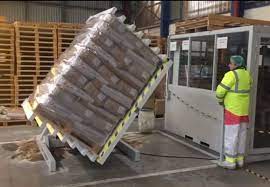
Thinking like an engineer who is passionate about efficiency, I see immense potential in connecting machines to data systems. It's how we move from fixing problems to preventing them. Here’s how we transform a mold flipper from a simple tool into a smart asset.
Integrating Sensors for Actionable Data
The key is to embed sensors that capture critical operational data. This isn't about collecting data for its own sake; it's about collecting the right data that can trigger a meaningful action. We can easily integrate a range of robust, industrial-grade sensors into the flipper's design:
- Cycle Counter: A simple but powerful sensor that logs every time the machine completes a rotation.
- Motor Current & Vibration Sensors: These monitor the health of the main drive motor and gearbox, the heart of the machine.
- Hydraulic Pressure & Temperature Sensors: For hydraulic models, these sensors track the health and performance of the power unit.
- Position Sensors: Confirm that clamps and safety locks are properly engaged before a cycle can begin, adding a layer of digital safety verification.
This suite of sensors turns the machine's internal state into a stream of digital information.
Data in Action: Fueling MES and Predictive Maintenance
Once this data is being generated, it can be fed into your plant-wide systems, like your MES or a Computerized Maintenance Management System (CMMS). This is where the data becomes truly valuable.
- For Predictive Maintenance: Your goal of 95% uptime relies on preventing failures. Let's say a vibration sensor on the main gearbox starts to show a small, but gradually increasing, trend. Your MES can be programmed to flag this as an early warning sign of a bearing failure. This triggers a work order automatically, allowing your maintenance team to schedule the bearing replacement during a planned shutdown, long before a catastrophic failure could occur. This is the essence of predictive maintenance and the path to high reliability.
- For Production Visualization: The data from the cycle counter provides your management team with a clear, real-time view of the throughput of your mold maintenance shop. Are you on track with the day's maintenance schedule? Is the mold shop a bottleneck? This data, displayed on your dashboards, provides a key performance indicator (KPI) that was previously invisible. It helps you manage your production and sales balance more effectively by giving you a clearer picture of your internal capacities.
| Sensor Type | Data Collected | Actionable Insight for Javier's Goals |
|---|---|---|
| Cycle Counter | Total number of rotations | (Uptime/Digitalization) Tracks usage for PM schedules, provides throughput data to MES. |
| Vibration Sensor | Gearbox/motor vibration patterns | (Uptime/Cost Reduction) Predicts bearing/gear failure before it happens, preventing unplanned downtime. |
| Motor Current Sensor | Amperage draw during operation | (Energy/Cost Reduction) Detects mechanical binding or inefficiency, highlights energy waste. |
| Pressure Sensor | Hydraulic system pressure | (Uptime) Alerts to leaks or pump inefficiency, preventing sudden loss of power. |
By building these capabilities into your mold flipper from the start, you are acquiring not just a machine, but another valuable data node in your growing smart factory network. It's a strategic move that aligns perfectly with your forward-thinking vision.
Conclusion
A mold flipper is more than a machine; it’s a strategic investment in safety, efficiency, and future-readiness, directly impacting your bottom line and protecting your most valuable asset—your people.



